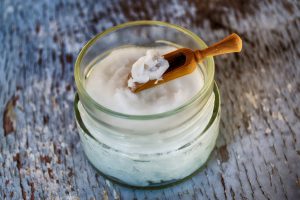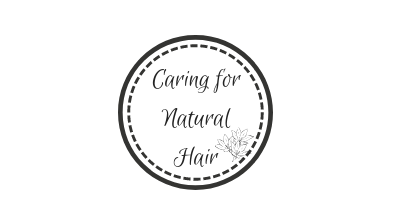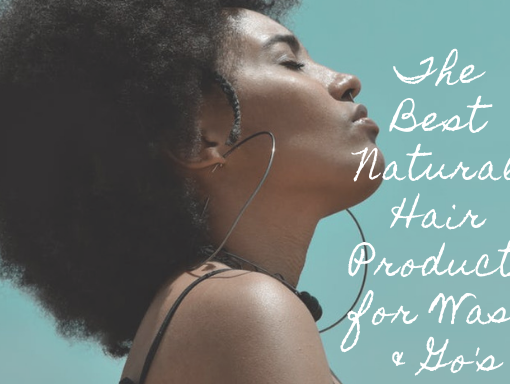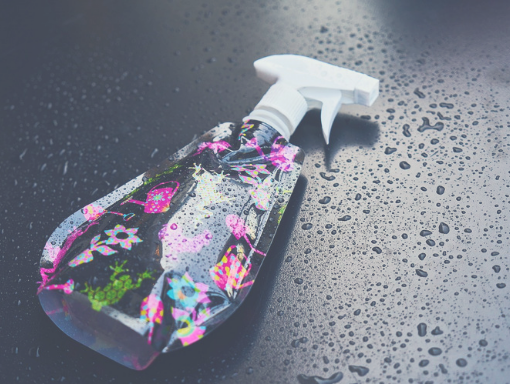There is nothing like having a successful wash and go, only for you to walk outside and – poof! Now you have a frizzy fro. While there are certain factors that can cause one’s hair to be more prone to frizz, there are also multiple ways to prevent and reduce it. To answer how to prevent frizz in natural hair, we must first know exactly what it is and what causes it.
So, what is frizz and what causes frizzy hair:
“Frizz” is a result of the scales of the hair cuticle lifting and expanding in response to certain external factors. Your hair type / texture can play a role in how prone your strands are to frizz. For example, naturally curly hair is more prone to frizz compared to naturally straight hair. The spiral shaped curly hair strands become easily tangled with each other, sometimes giving the appearance of raised strands, or frizzy hair.
For the different types of curls, coils, and kinks throughout natural hair, frizz is additionally more common due to our hair strands having a natural proneness to dryness. Because of the dryness, the hair cuticle lifts in response to the humidity / moisture in the air in an effort to absorb it. This causes the hair cuticle to “swell” almost, giving the appearance of raised, frizzy hair.

To add to this, hair damage can be a factor with frizzy hair. High porosity hair for example, is more prone to frizz because the hair cuticle is already slightly raised. Over-manipulation can lead to frizz, and certain ingredients as well. It may seem like everything and anything can result in frizz. But don’t worry, here are 9 ways you can prevent frizz in your natural hair:
1. Moisture, moisture, moisture
Since frizz is often times caused by dry hair, adding an extra layer of moisture will help to keep your hair cuticle smooth and your strands hydrated. There are a variety of moisturizing hair products that aid in retaining this moisture. Ensuring that your strands are hydrated before stepping outside will help to prevent your hair from drying out and reacting with the humidity in the air causing frizz.
2. Thoroughly wet your hair before applying product
It is important to thoroughly wet your strands before applying your styling and leave-in products, especially when trying to prevent frizz. The water absorbs the product and locks it in, making for smoother, softer hair. Thoroughly wetting your hair will also allow for more product to reach all of your strands – creating more definition for a stronger, longer lasting hold.
3. Look at the ingredients label
There are certain ingredients in hair products that can actually be causing you frizz. Glycerin, for example, is a humectant intended to help the hair attract moisture. However, it can also be the culprit of frizz. Glycerin can actually be counteractive in certain temperatures. For example, during humid weather where our hair is already prone to frizz, glycerin can attract even more moisture that can cause the hair cuticle to further raise in an effort to absorb it, creating frizzy strands. Other ingredients that can cause frizz include silicones, sulfates, parabens, and more.
4. Use a heavier sealant 
Sealants are used to seal moisture throughout your strands and can come in the form of oils, creams, leave-in conditioners, etc. If you find that you put an adequate amount of moisture into your hair but still experience an excessive amount of frizz, it may be that the sealant you are using is ineffective.
If you typically use an oil as a sealant, try using a heavier one like coconut oil or castor oil. The same applies for your creams and / or leave-in conditioners– try using one with a thicker consistency. The heavier sealant will help to lay the hair cuticle and lock in moisture for longer, alleviating frizz.
5. Trim the damage away
Another reason you may be experiencing frizz all the time is because of hair damage. An excessive use of heat tools and / or chemicals can cause permanent damage to your hair. The result is often highly porous strands, or lifted hair cuticles. This, in combination with humidity in the air can give the appearance of frizzy, dull hair. The raised hair cuticle easily absorbs moisture but has difficulty retaining it (the hair cuticle lying flat to seal moisture). Heat and chemical damage is irreversible, so it will eventually have to be trimmed. Once you do, you will notice your curl pattern spring back to life.
6. Use strong hold products
While there are products that are designed specifically to combat frizz, there are others that provide enough hold as-is to prevent frizz. Gels and pomades provide the strongest hold as far as styling products. After applying your moisturizing leave-ins, apply a gel lastly to capture and hold the curl pattern. The hold should be able to last you through the temperatures outside.
7. Make sure your hair is detangled prior to styling
Although it may take some time, detangling prior to styling will definitely pay off. When washing your hair, the strands intertwine and lock with each other. If you skip detangling and go on to applying product directly over these tangles, it can cause an uneven distribution of product, and frizz.
Because the hair hasn’t been detangled, the hair strands remain locked with each other and can give off the appearance of raised or frizzy strands.

8. Let your hair air dry or use a cooler heat setting
Using constant heat can not only lead to damage, but can also play a role in what is causing you frizz. If you are doing a hairstyle that requires heat, try to limit it to a cooler setting. Or, if you are doing a wash and go, try to let your hair air dry if time permits. Letting your hair air dry can additionally prevent over-manipulation that often times leads to frizz.
9. Don’t touch your hair while its drying
While it may be tempting, avoid touching your hair while its drying and after you have applied your products. Touching your hair while drying can disrupt the curl pattern and the cast from the products that forms to help hold the curl.
What are some of your favorite products and methods that prevent frizz in your natural hair?
References:
1Fries, Wendy C. “How to Tame Frizzy Hair.” WebMD, WebMD, www.webmd.com/beauty/features/how-to-tame-frizzy-hair#1.




